In recent years, I've noticed a pattern of conversation when interacting with people at art shows. Upon seeing my work for the first time, one of three reactions usually follows:
A) "How long did that take?"
B) "Dude, I can't even draw a stick figure."
or C) "Where do you get the idea for that painting?"
The most common question is C. So for this post, I thought I'd walk through the entire painting process, from concept to completion.
This fall I took a weekend trip deep into the Appalachian Mountains to photograph a herd of wild elk in the Cherokee National Forest. On the final morning of my trip, as the sun rose higher in the sky and burnt off of the hazy fog from the valley floor, the elk I was photographing began to slowly filter up into the shadowy timberline. The intense rut activity that I witnessed at daylight began to wane, and as the boss 6x7 bull followed his cows up into the shade, I felt the curtain began to close on the morning's production. But then, a lone bugle echoed through the valley, bellowed from another bull on the opposite ridgeline. This stud bull was having none of it. He emerged from the shadows, stepped back out perfectly into the light and let us all know who ruled the valley with a long, guttural bugle of his own. Here's the photo I snapped in the moment:

This bull stepped out perfectly into the light for one last bugle. He was probably 75 yards away when I snapped the photo.
So many times you have to tweak a reference photo to get it suitable for painting. Adjusting lighting angles, contrast, increasing or decreasing the size of a rack, moving a leg left or right to make the animal appear more balanced, etc. But this image was a winner from the moment my Canon shutter snapped, and I almost couldn't believe how perfect the lighting was. I knew then that I wanted to paint it.
He could have worked as a solo bull, but I've painted enough of those and wanted something more. I felt a couple cows placed to the left, one deep in the shade and another at the edge of the timberline, would help to tell the story better. So I dug up a couple more shots from the trip that I felt worked, and added them into the composition. Here are the cow pics I used:

I spotted this cow at the back of the herd and really liked the play of warm light on her backside vs. cool light on her belly and front quarter.

This cow wasn't anything special, but I needed a reference of a cow in even, cool light so I could put her in the shade.
The pieced just still wasn't quite what I wanted; it didn't have a sense of elevation. I wanted it to feel like these elk were headed up into the shadowy recesses of a high mountain haunt for the day, and this bull just had to get the last word in. So I changed the angle of the shadows and treeline to suggest an elevation change. This gave me a strong diagonal sweeping into the upper left. I sketched the composition on canvas and began to lay down color.

My initial sketch on canvas.

The underpainting in progress with washes of Burnt Sienna and Ultramarine Blue.
I started the painting process with washes of Burnt Sienna and Ultramarine Blue to establish my lights and darks and lay down the form of the elk. Once this was done, I simply applied color with brush and palette knife, working to bring the piece to a more and more finished state. To counter balance the strong left-leaning diagonal of the grass and draw attention to the bull, I added a log running diagonal in the opposite direction. (Often, I look at my work in a mirror, and doing so reveals any odd diagonals or the "leaning" that results from being right-hand oriented and getting comfortable painting on the piece - that's how I determined the grass/treeline diagonal needed work)
Below, you can see a time-lapse video of the painting process. Each painting presents unique challenges and requires a fresh approach to problem-solving, but overall this elk piece provides a general idea of my technique. It's so much fun to bring a piece to life, and especially to look back and see it in action. I hope you enjoy the unique glimpse into my studio that this video provides.


